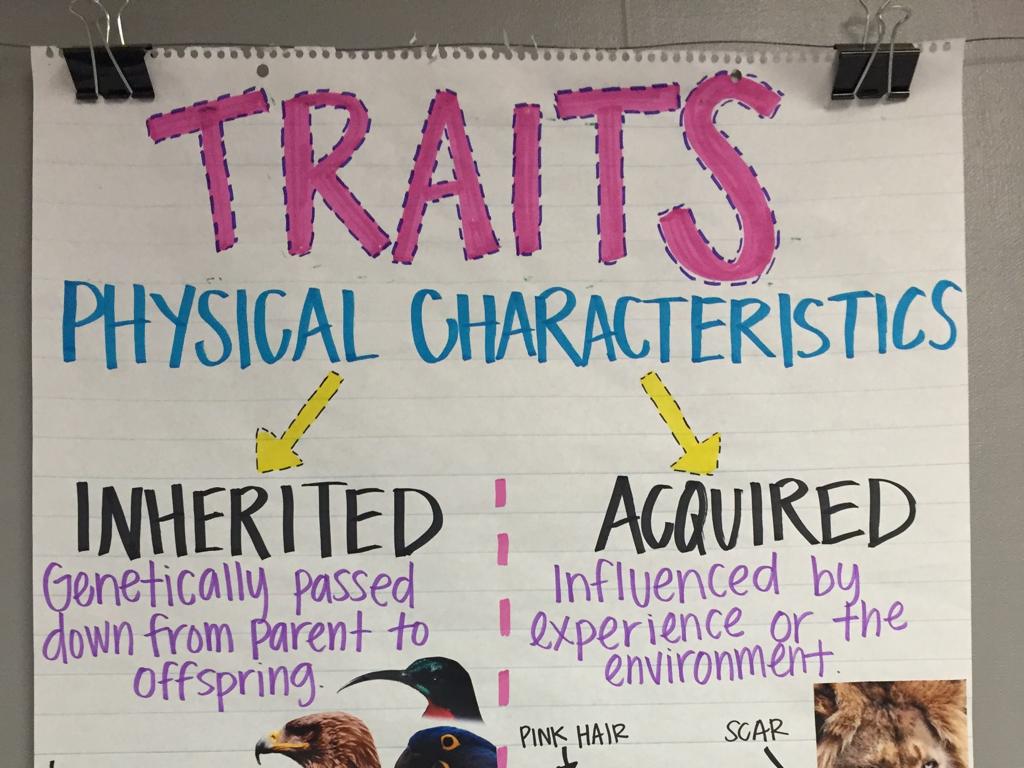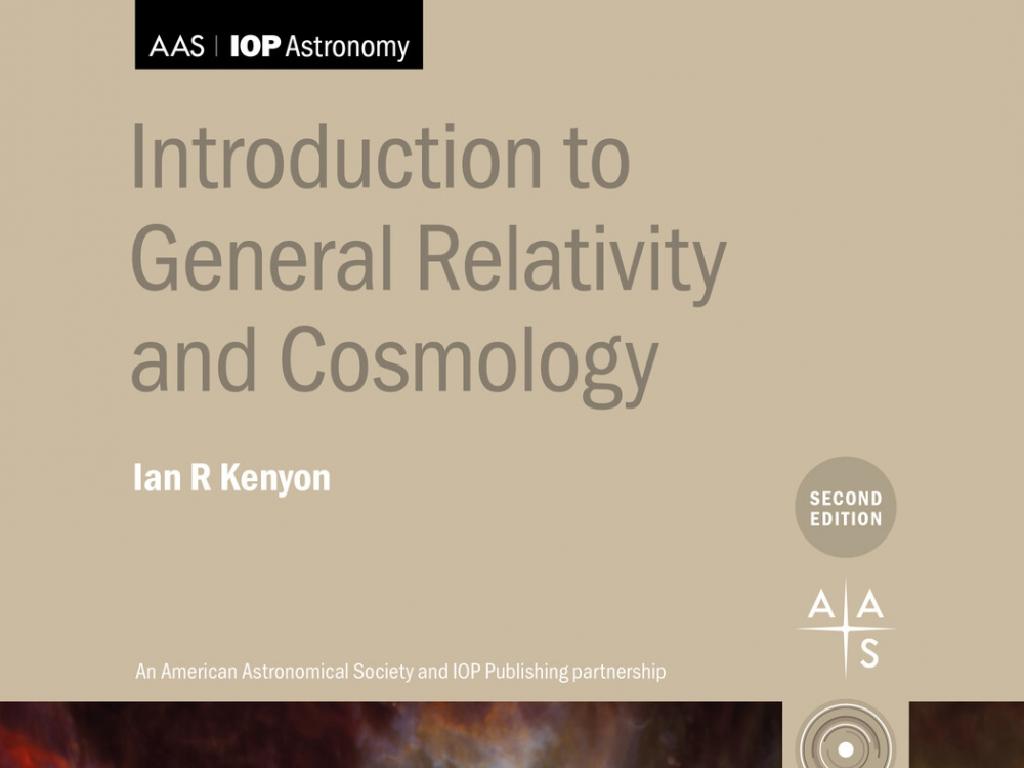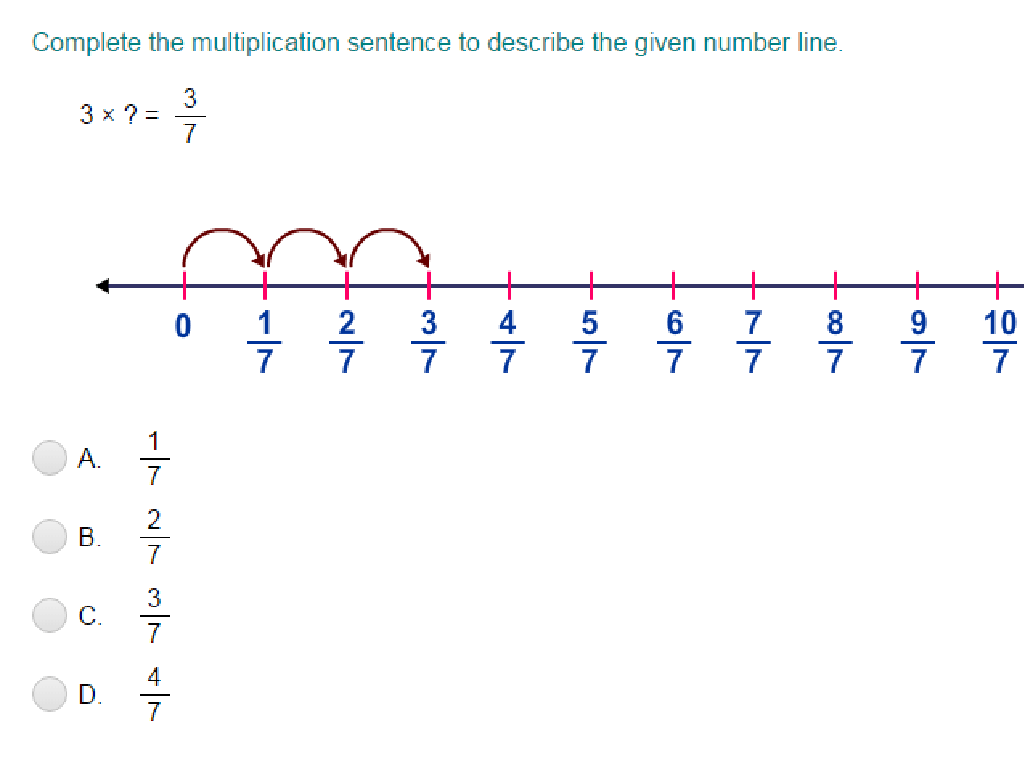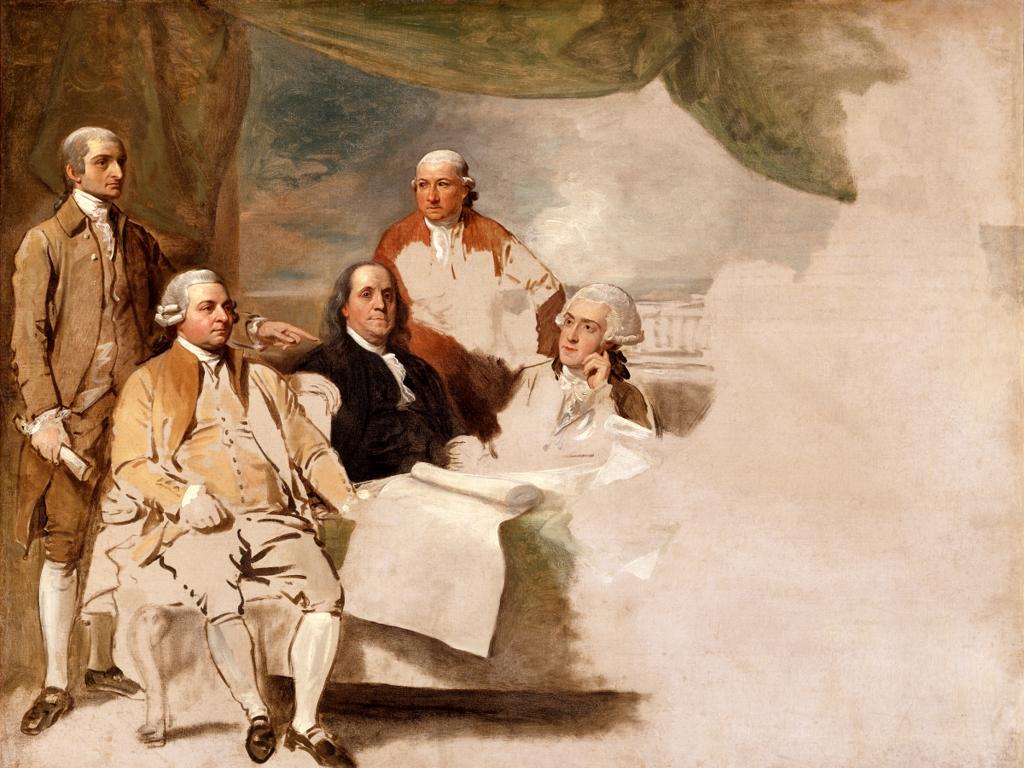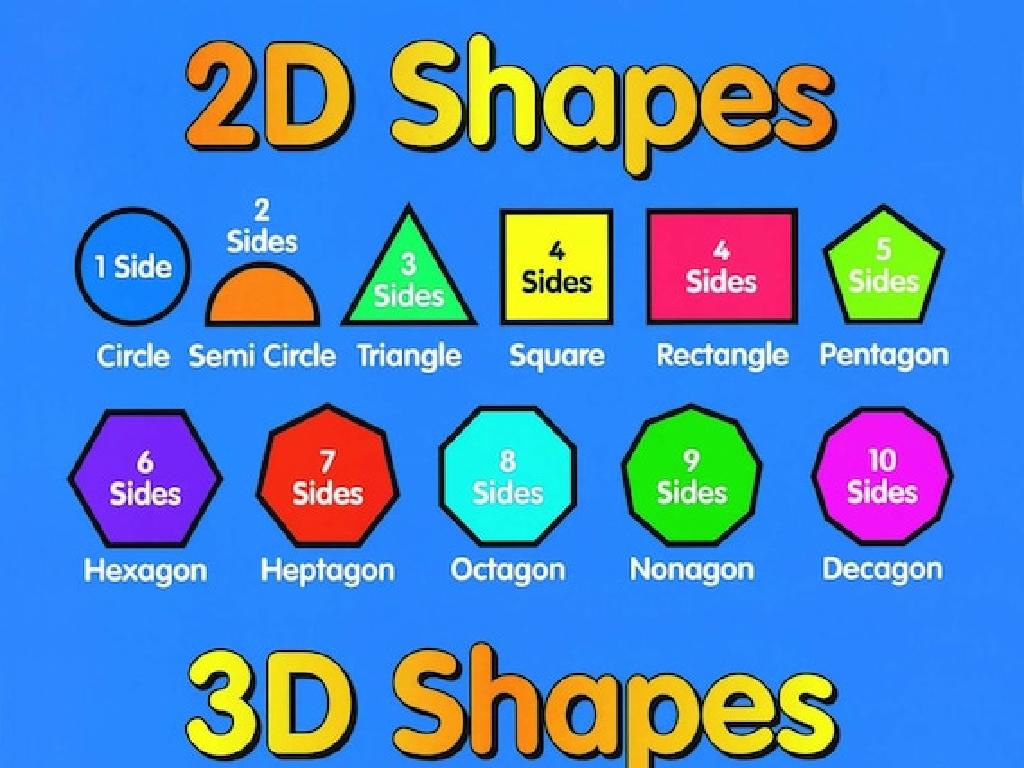Side Lengths And Angle Measures Of Similar Triangles
Subject: Math
Grade: Eighth grade
Topic: Transformations And Congruence
Please LOG IN to download the presentation. Access is available to registered users only.
View More Content
Introduction to Similar Triangles
– Exploring similarity in geometry
– Similar figures have the same shape but not necessarily the same size.
– Defining similar triangles
– Triangles with equal corresponding angles and proportional sides.
– Properties of similar triangles
– Corresponding angles are equal, sides are proportional.
– Practical applications
|
This slide introduces the concept of similarity within geometry, focusing on similar triangles. Start by explaining that similarity refers to figures that have the same shape but may differ in size. Move on to define similar triangles specifically, noting that they have identical angle measures and side lengths that are proportional. Discuss the properties of similar triangles, emphasizing that each pair of corresponding angles is equal and each pair of corresponding sides is in proportion. Conclude with examples of how similar triangles are used in real-world applications, such as in engineering and architecture, to create scale models or to calculate distances indirectly through the use of proportions. Encourage students to think of other areas where similar triangles might be applicable.
Congruence and Transformations in Triangles
– Recap on congruence
– Congruence means identical in form; covering each other perfectly when superimposed.
– Transformations preserving triangles
– Rotations, reflections, and translations keep the original size and shape.
– Linking congruence and similarity
– Similar triangles have the same shape but not necessarily the same size.
– Exploring similar triangles
– We’ll examine how side lengths and angles remain proportional in similar triangles.
|
Begin with a brief review of congruence, ensuring students recall that congruent figures are identical in size and shape. Discuss transformations such as rotations, reflections, and translations, emphasizing that these do not alter the size or shape of figures. Highlight the connection between congruence and similarity, clarifying that while similar figures maintain the same shape, their sizes may differ. Use proportional reasoning to explore how the side lengths and angles of similar triangles correspond. Provide examples of similar triangles and demonstrate how to calculate missing side lengths or angles using proportions. Encourage students to practice with various triangle pairs to solidify their understanding.
Criteria for Triangle Similarity
– SSS Similarity Criterion
– If the sides of two triangles are in proportion, the triangles are similar.
– SAS Similarity Criterion
– Two triangles are similar if two sides are proportional and the included angles are equal.
– AA Similarity Criterion
– Two triangles are similar if two angles of one match two angles of the other.
|
This slide introduces students to the criteria used to determine if two triangles are similar. Similar triangles have the same shape but not necessarily the same size. The SSS Similarity Criterion states that if all three sides of two triangles are in proportion, then the triangles are similar. The SAS Similarity Criterion requires two sides to be proportional and the angle between those sides to be congruent. The AA Similarity Criterion is based on the idea that if two angles of one triangle are congruent to two angles of another triangle, the triangles are similar. It’s important to note that the AA criterion is sufficient for proving similarity because if two angles are the same, the third must be as well, due to the sum of angles in a triangle being 180 degrees. Provide examples of each criterion in class and have students practice identifying similar triangles using these criteria.
Calculating Side Lengths in Similar Triangles
– Use ratios for missing sides
– If two triangles are similar, their corresponding sides are in proportion.
– Example: Finding a missing length
– Given ABC ~ DEF, if AB/DE = BC/EF, find length of BC when AB, DE, and EF are known.
– Practice Problem on side lengths
– Solve for the missing side using the ratio method from the example.
|
This slide is focused on teaching students how to calculate the side lengths of similar triangles using ratios. Start by explaining that in similar triangles, corresponding sides are proportional. This means that the ratios of the lengths of corresponding sides are equal. Provide a clear example with known side lengths and one unknown side, and demonstrate step-by-step how to set up and solve the proportion to find the missing length. After the example, present a practice problem for the students to solve, reinforcing the method. Encourage students to set up the proportion correctly and cross-multiply to solve for the unknown side. This exercise will help solidify their understanding of ratios and proportions in the context of similar triangles.
Determining Angle Measures in Similar Triangles
– Corresponding angles are congruent
– Example: Finding a missing angle
– If two triangles are similar, angles in the same position have the same measure.
– Practice problem on angle measures
– Use known angles to find the unknown angle in a similar triangle.
– Understanding angle relationships
– Recognize patterns in angle measures and apply them to find missing angles.
|
This slide introduces students to the concept that corresponding angles in similar triangles are equal, which is a key property of similar figures. Start with an example problem where students can apply this knowledge to find a missing angle measure. Provide a practice problem for students to solve independently, reinforcing the concept. Emphasize the importance of understanding the relationships between angles in similar triangles, as this is a foundational skill in geometry. Encourage students to look for patterns and use deductive reasoning when solving for unknown angles. The practice problem should be designed to challenge students but also be achievable with the knowledge they’ve gained from the lesson.
Real-World Applications of Similar Triangles
– Usage in everyday life
– Similar triangles are used in navigation, architecture, and art.
– Estimating heights and distances
– Example: Measuring a tree’s height using its shadow and a proportionate smaller triangle.
– Discuss other known applications
– Students can explore how similar triangles apply in fields like astronomy, surveying, and construction.
|
This slide aims to connect the concept of similar triangles with practical applications that students can relate to. Begin by explaining how similar triangles are everywhere around us, from the way we navigate using maps to the design of buildings and bridges. For the example, demonstrate how to estimate the height of a tree by measuring its shadow and using a smaller, similar triangle formed by a meter stick. Encourage students to think critically about other areas where similar triangles are used, such as determining the distance of ships at sea or the height of mountains. This discussion can help students appreciate the relevance of mathematical concepts in real-world scenarios.
Class Activity: Creating Similar Triangles
– Construct your own similar triangles
– Use ruler, compass, protractor
– Work in groups to compare triangles
– Discuss similarities and differences
|
This class activity is designed to help students understand the properties of similar triangles through hands-on experience. Provide each student with a ruler, compass, and protractor. They will use these tools to construct triangles that are similar by ensuring that the angles are equal and the sides are proportional. Once the students have constructed their triangles, they will form groups to compare their triangles with their classmates’. Encourage them to discuss the similarities and differences they observe. Possible activities for different students could include constructing triangles with different side lengths but the same angles, comparing the ratios of the sides, or using the triangles to solve problems. This activity will reinforce the concept of similarity and provide a practical understanding of how it applies to geometric shapes.
Review and Q&A: Similar Triangles
– Recap key points on similar triangles
– Invite student questions
– Address confusions clearly
– Ask for specific areas of difficulty
– Reinforce learning with examples
– Use examples like comparing different sized triangles with same shape
|
This slide is meant to consolidate the students’ understanding of similar triangles, their side lengths, and angle measures. Begin with a brief recap of the key points covered in today’s lesson, ensuring to highlight the criteria for triangle similarity and the properties that similar triangles possess. Open the floor to students, encouraging them to ask questions about any aspect of the lesson they may not have fully understood. Be prepared to clarify common points of confusion, such as the difference between similar and congruent triangles, and how to calculate the sides and angles. Use additional examples to reinforce the learning objectives and ensure that students can apply the concepts to various problems. This interactive session will help solidify their understanding and prepare them for upcoming assessments.
Homework: Similar Triangles & Congruence
– Complete practice problems on similar triangles
– Focus on side lengths ratios and angle measures
– Study for the upcoming quiz on transformations and congruence
– Review properties of transformations that preserve congruence
– Ensure activity triangles are ready for next class
– Bring your completed triangle constructions for class activities
– Review notes and ask questions if needed
|
This slide outlines the homework assignment for students, emphasizing the importance of practice and preparation for the next quiz. Students should complete the set of problems related to similar triangles, focusing on understanding the proportionality of side lengths and the equality of corresponding angle measures. They should also review their notes on transformations and congruence to ensure a solid grasp of the concepts for the quiz. Additionally, students are reminded to bring their completed activity triangles to the next class for hands-on learning experiences. Encourage students to reach out with any questions during the review to clarify any uncertainties before the quiz.

